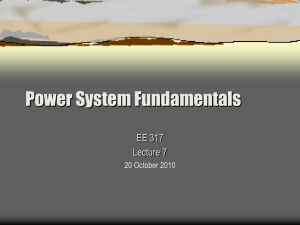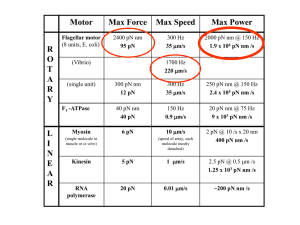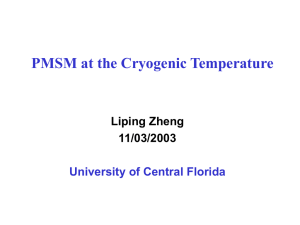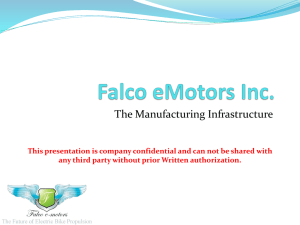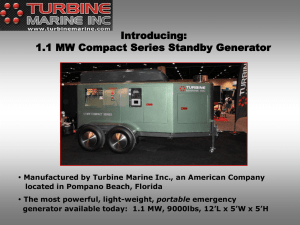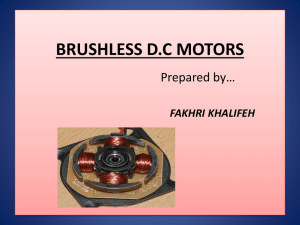Pumps & Systems, February 2009 Since the introduction of
advertisement
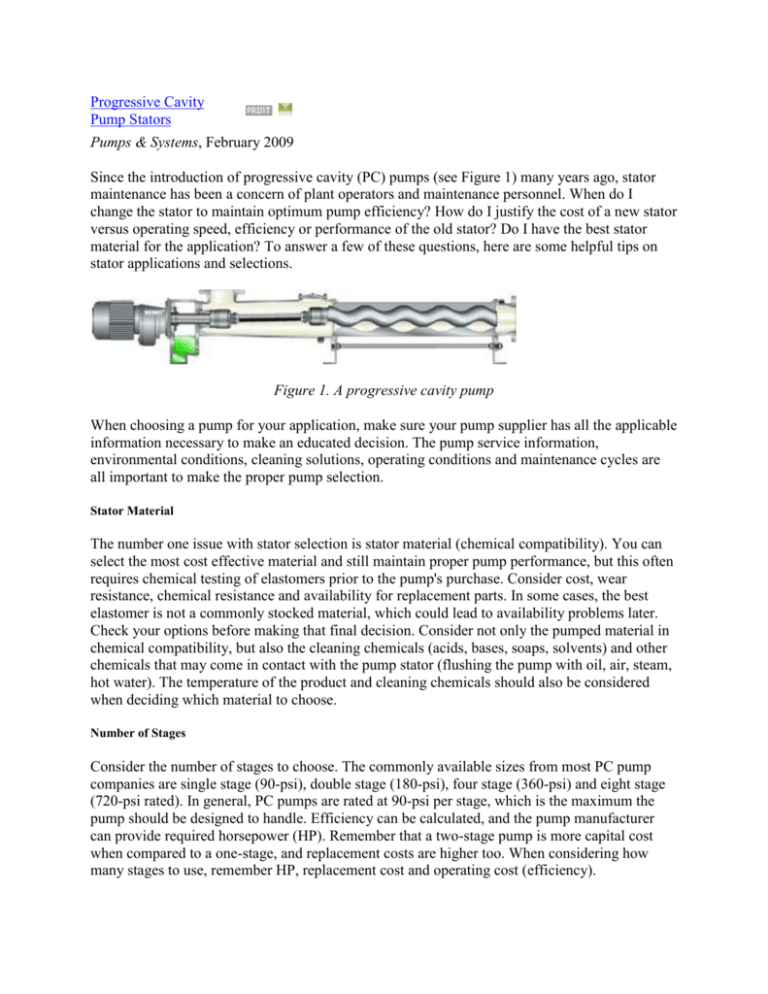
Progressive Cavity Pump Stators Pumps & Systems, February 2009 Since the introduction of progressive cavity (PC) pumps (see Figure 1) many years ago, stator maintenance has been a concern of plant operators and maintenance personnel. When do I change the stator to maintain optimum pump efficiency? How do I justify the cost of a new stator versus operating speed, efficiency or performance of the old stator? Do I have the best stator material for the application? To answer a few of these questions, here are some helpful tips on stator applications and selections. Figure 1. A progressive cavity pump When choosing a pump for your application, make sure your pump supplier has all the applicable information necessary to make an educated decision. The pump service information, environmental conditions, cleaning solutions, operating conditions and maintenance cycles are all important to make the proper pump selection. Stator Material The number one issue with stator selection is stator material (chemical compatibility). You can select the most cost effective material and still maintain proper pump performance, but this often requires chemical testing of elastomers prior to the pump's purchase. Consider cost, wear resistance, chemical resistance and availability for replacement parts. In some cases, the best elastomer is not a commonly stocked material, which could lead to availability problems later. Check your options before making that final decision. Consider not only the pumped material in chemical compatibility, but also the cleaning chemicals (acids, bases, soaps, solvents) and other chemicals that may come in contact with the pump stator (flushing the pump with oil, air, steam, hot water). The temperature of the product and cleaning chemicals should also be considered when deciding which material to choose. Number of Stages Consider the number of stages to choose. The commonly available sizes from most PC pump companies are single stage (90-psi), double stage (180-psi), four stage (360-psi) and eight stage (720-psi rated). In general, PC pumps are rated at 90-psi per stage, which is the maximum the pump should be designed to handle. Efficiency can be calculated, and the pump manufacturer can provide required horsepower (HP). Remember that a two-stage pump is more capital cost when compared to a one-stage, and replacement costs are higher too. When considering how many stages to use, remember HP, replacement cost and operating cost (efficiency). Geometry Profile Another important consideration with progressive cavity pump stators is the geometry profile (see Figure 2). Generally, there are four different stator geometry technologies in the marketplace. Conventional geometry is typically 1:2 (single helix rotor inside a double helix stator). New stator configurations include 2:3 (double helix rotor inside a triple helix stator) geometries. Also, consider standard (short pitch) or long geometry when choosing a stator. Standard geometry is usually best for thick material because it has a larger opening to the stator cavity. Long geometry is an efficient design because of its long sealing line. Various 2:3 geometries are cost effective since they pump more flow per revolution compared with standard designs. Figure 2. Geometry profile Stator Tubes The tube material can also be an issue when selecting stator types. Steel tubes are the most common, but in some cases stainless steel tubes (more expensive) are required (food service, chemical service, sanitary reasons). Sometimes aluminum housings are used (light weight and cost effective). Be careful to consider what cleaning chemicals would be used on the outside (washdown service) of the pump. Some new designs incorporate a separate stator insert (rubber material) with the stator tube (see Figure 3). This new design makes replacement of future stators easier and cost effective, and incorporates the ability to recycle the two components without complicated mechanical separation. Figure 3. Separate stator insert with the stator tube Stator gaskets should also be considered when making a stator choice. Some stators require Orings to seal, others require gasket material and others have molded-to-fit stators that have integral stator gaskets (see Figure 4), made from the same stator material, as part of the stator itself. This eliminates extra parts and simplifies the changing of the stator. Figure 4. Integral stator gaskets Stator Construction Molded-to-size stators are made using a core that is specifically designed for a unique stator. These unique cores consider the type of elastomer, the number of stages and the shrink rate of the material for optimized compression across the entire length of the rotor (see Figure 5). For example, a two-stage pump stator can be made with a two-stage core or it could be made with a four-stage core, which is then cut in half to product two, two-stage pump stators. Molded-to-size stators properly account for stator shrinkage during manufacturing and help hold a constant, uniform compression between rotor and stator for the entire pump length. Figure 5. Molded-to-size stator core Starting Torque Starting torque should be considered. This is important in determining the HP required for the pump, but also impacts the life of the stator and its efficiency. Optimizing starting torque versus efficiency is important in the final selection. Selecting a pump manufacturer that optimizes stator compression (see Figure 6) for performance and balances efficiency is essential to optimal PC pump performance. Figure 6. Optimized stator compression Conclusion In summary, make careful choices when considering what type of PC pump to purchase, and what stator options to choose. It impacts the initial capital cost and affects the overall life cycle cost of the pump. Choosing the lowest cost pump may not always be the best choice. Consider the stator material, number of stages and type of geometry, construction and the quality of manufacturing to ensure the best overall value. This value is maximized when considering capital cost, operating cost, spare parts cost and maintenance cost. Avoid considering only one of these during the evaluation. Name Email Website Title Comment ) > 749 GUQ07JofrkKR add 0 com_content



